Foreign automakers adapting to the new realities of the Russian automarket

Most representatives of the foreign automakers community in Russia, speaking through the influential Automobile Manufacturers Committee (AMC) of the Association of European Businesses (AEB) in Russia, have assessed their performances in the country in 2008 as positive, despite the full-blown nature of the current global crisis. However, this year and the near future are rather bleak as foreign automakers’ sales figures in Russia are expected to fall significantly in 2009 and years ahead.
Thus, according to AEB’s forecasts, the gross sales figure is expected to tank by 19% in 2009, compared to 2008’s figures, with no signs of immediate recovery in sight. The bleak future stemmed directly from the raging global financial woes and its negatively drastic effects on the domestic economy. As it is well known, it is a matter of record that over 80% of Russia’s exports and more than half of its gross revenue traditionally come from oil, natural gas, metals and other export commodities. As a result, the country has become very vulnerable to acute fluctuations in global prices on these export commodities due to the deepening effects of the global meltdown.
"Market trends in this year and the near future are rather bleak, as foreign automakers’ sales figures in Russia are expected to fall significantly in 2009 and years ahead."
These negative trends — both domestically and globally — only helped underscore the autoindustry experts and car manufacturers’ rising and justified apprehensions over the deepening depth of the unfolding crisis. For instance, the global auto sales have already dipped from 69mln in 2007 to 63mln units in 2008 and, if these negative trends are maintained, according to experts, then the global sales figures are expected to be about 55mln and even less by the end of 2009. Domestically, sales on the Russian auto market, according to PricewaterhouseCoopers (PwC), are expected to dip by 15% in the most optimistic case scenario, and up to 45% in the most pessimistic scenario. Consequently, the end-year sales figures, in the most optimistic case scenario, are expected to be about 2.68mln, while most pessimistic case scenario foresees a meager figure of about 1.73mln.
The situation is further complicated by the fact that the global autoindustry has come under unprecedented three-pronged negative forces of economic recession, global credit crunch and foreign exchange volatility, a combination, which, according to experts, has seriously exacerbated an-already bad situation. This negative prognosis has been collaborated by auto experts, who have noted in their official speeches/reports in and outside Russia, that full recovery should not be expected at anytime shorter than seven years, thus underscoring the bleakness of the future of the industry, which will put all local and global automakers on the defensive in years to come as they grapple with the deepening financial crisis and its worsening negative impacts.
At least, seven years will elapse before the global sales volume will return to the level of 2007, when 69mln vehicles, seen as a record sales figures for the global auto industry, were sold, Carlos Ghosn, president and CEO of Nissan Motor Co., who also doubles as the head of Renault S.A., told the Global Competitiveness Forum in Saudi Arabia, where major investors, including car manufacturers, compared notes as they mapped out short- and long-term strategies to fight the global crisis and mitigate its crisis on their operations. “For the next couple of years, practically all car manufacturers are going to be in a defensive mode, reducing inventory and investments.”
Gone are the spectacular precrisis successes
Speaking at a press conference dedicated to the assessment of the achievements of foreign automakers in 2008 and their plans for the future, top AMC officials, who are also representatives of leading European auto giants in Russia, noted that though the end-year sales growth for 2008, at 26% was a far cry from the record-breaking figure of 61% in 2007, the overall sales figure in natural terms still rose to over 2.08mln, compared to 1.65mln in 2007. The positive sales trend leaders remained as in the previous years, with the U.S. Chevrolet leading the top-5 foreign auto companies that added 2008 to their positive achievements-report cards. It was followed at a far-distant second by South Korean Hyundai, and then Japanese Toyota, U.S. Ford and Japanese Nissan.
These positive performances for a select group of automakers, however, do not mean that the current global crisis has left the Russian autoindustry completely unscathed. Indeed, there were great losses, both on year-on-year and month-on-month bases, which got worsened especially at the end of the 2008. Thus, in the elite premium class, the sales of such brands as Alfa Romeo, Porsche and Hummer went down significantly by double digits by 60%, 14% and 12%, respectively. Topping the list of foreign automakers in the ‘economy-price class,’ who lost positions on the Russian automarket in 2008 was Chinese Chery, whose sales figured dipped by a record of 58% year-on-year.
"Foreign automakers see the government’s anticrisis measures as creating a special situation on the market, where local automakers will be in a more competitively advantageous position to ride out the crisis."
Besides, almost all foreign automakers reported negative sales figures in December 2008, seen so far as the worst month since the global financial crunch clouded the present and future perspectives for both local and foreign automakers in Russia and globally. In December alone, the drop in sales figures across all price segments — economy, medium and premium — of the erstwhile robust Russian auto industry averaged 10%. Specifically, the December sales of Chevrolet, the overall growth leader in 2008, fell by a whopping record of 61% to 21,319 units, compared to the previous year’s figures, followed by Hyundai, whose sales plummeted by 45% to 17,677 and Ford with sales figures down by 15% to 12,055 units.
The Russian autoindustry mirroring negative global trends
Today, the global car market has become one of the most vulnerable sectors under the conditions of changing credit policies by banks, rising defaults among consumers and threats of bankruptcies among leading automakers. Specifically, the global financial crisis made financial institutions change credit policies and reduce cheap retail loans. These changes are impacting negatively not only on the Russian car manufacturers, but also on the dealers and importers of foreign auto brands in the country. The autoindustry, according to experts, has become the hottest frontline in conditions of deepening global credit crunch, increasing currency exchange rates volatility and other crisis-related woes. “Taking into account the fact that over 45% of auto sales in Russia are financed through bank loans, the financial crisis has forced banks to deny nearly almost all loan applications for the purchase of new cars in Russia,” Olga Krivetskaya, an assistant research analyst on car and transport industry at Frost & Sullivan, said.
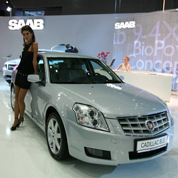
Against these negative trends, the local automarket operators are now at a crossroad. Indeed, the immediate future of the Russian autoindustry — which is mirroring the abysmal global trends that have almost brought the world’s largest automakers to their knees or sent them, hats in hands, begging for huge bailouts from institutional and government sources or both — is currently eclipsed by uncertainty. This marked a radical change from the robust market trends in Russia in the previous years that saw automakers raking in between $65-70bln from auto sales in 2008 and $47bln in 2007.
Unlike these spectacularly positive past years, the future ahead is now filled with only negative trends and pessimistic sentiments. For instance, according to AEB’s forecast for this year, sales might dip further by almost 20%, a figure seen in some quarters as the best-case scenario prognosis, as more pessimistic forecasts see the industry going down by between 30-50% by the end of 2009. The relatively low sale volumes of local and foreign cars in January and the expected overall poor sale figures for the first quarter of 2009 only helped strengthen the prevailing pessimistic moods on the automarket. Thus, according to AEB’s preliminary data, the sales of new local and foreign cars in Russia nosedived in January 2009 to 116,500 units, representing a 33% decline from 174,488 in January 2008 and a whopping 44.5% fall from 210,293 in December 2008.
Besides, experts are forecasting worsening scenarios capable of radically transforming the structure of demand for cars on the domestic automarket. Such changes, according to Ernst & Young, will lead to the increase in the gross share of the local autobrands, from the current 25.5% to 35%, or in natural terms, to 670,000-730,000 units, on one hand, and a significant shift in demand toward cheaper autobrands, irrespective of countries of origins, on the other. Notably, the rising auto prices, and consequently, decreasing demand for cars, have been attributed to the increased import duties on new and second-hand foreign cars, increasing inflationary expectations and a significant devaluation of the ruble, which has led to considerable hikes in all prices of all imported goods, including foreign cars.
Experts specifically noted that a more radical shift of demand toward cheaper brands was held back at the beginning of the year by the stockpiles of vehicles imported into the country under old customs rules. However, sales of all categories of foreign vehicles are expected to nosedive, as soon as these stockpiles are exhausted, forcing dealers to start cars imported under the new, stricter customs regulatory measures and other government’s anticrisis economic measures with protectionist flavors. Thus, according to Ernst & Young, sales of new cars are expected to drop in 2009 by 25-30% to about 1.92mln-2.06mln units. Other experts see Ernst & Young’s data as a best case scenario, as their more pessimistic projections see sales dropping by unprecedented 50% to 1.3mln-1.5mln., a perspective that could put the Russian autoindustry on the brink of collapse.
"The situation is further complicated by the fact that the global autoindustry has come under unprecedented three-pronged negative forces of economic recession, global credit crunch and currency exchange rate volatilities."
Against such bleak background, experts are reluctant to make long-term prognoses on industry growth and figures, even for 2010. “It does not make any sense now to try to forecast the market trends for the next year,” Martin Jahn, the vice chairman of AEB’s AMC, who also doubles as the CEO of Volkswagen Rus, the Russian subsidiary of the German auto giant, said. The AEB expects the production of locally made foreign cars to increase, but such outcome, according to Ian, is conditional on two key factors: the economic situation and the availability of affordable funding.
Foreign automakers balk at protectionism
The only solace is the Russians’ yet-to-be-satisfied, huge appetite for foreign cars, which foreign automakers hope to capitalize on, as they fight the crisis against a background of growing protectionism from the Russian government, which likes most other governments, has pledged to help support Russian automakers during the crisis through the adoption of far-reaching economic measures.
Foreign automakers say Russian government’s actions are creating a situation, where local autoproducers will be in a more competitively advantageous position to ride out the crisis with least losses. One of these substantial changes is the amendment to the policy on new and used car import duties. Specifically, the amendment increased the rate of import duties on shipment of foreign-made cars into the country, and reduced the maximum age for used cars eligible for import into Russia from seven to five years. Also, the government has pledged several billions of rubles on subsidizing interest rates on bank loans granted for the purchase of cheap locally made cars, carrying price tags of not more then 350,000rubs (or about $10,000). This condition will make the ubiquitous AvtoVAZ’s Lada brands and other domestically manufactured cars in this price category, the only beneficiaries from this official policy.
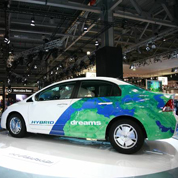
Understandably, most foreign automakers are discontented with these favoritism measures, naming them among the main factors pushing cars out of the reach of many in this-car-crazy nation. “Prices on foreign cars are sure to rise as the government has raised the import duties on foreign cars, while encouraging the devaluation of the local currency,” Jahn added. Such preferential treatments are dealing a deadly blow to the spirit of free market, and hence competition, Jahn and other foreign automakers noted. “It is a pity that the Russian government is disbursing huge amounts of money to supporting the local automakers. This money is not reaching the market, and most importantly, does not translate to the consumers in form of a better quality product,” they added.
Besides, some foreign auto giants with localized factories in the country are also equally irked by the fact they are left out of the Russian government’s support programs, despite the fact their local plants are officially registered as Russian legal entities, and are hence, by definition and local corporate law, Russian companies. These negative factors, according to experts, including AEB, arising from the official anti-crisis policies, have already pushed prices up by over 7% since their adoptions, compared to the average price hikes over the past years of 3-4%. “We provide employment to Russians, pay taxes, give jobs to suppliers of local auto parts, and therefore, would also like to have our clients,” Jahn noted.
According to the most optimistic forecasts, the Russian auto market is expected to begin recovery by the end 2009, while the most pessimistic prognoses see stability and growth reemerging on the domestic autoindustry not earlier than late 2010. “As soon as the Russian banking sector is able to overcome the current financial crisis and the auto loans become more readily available and affordable again to potential auto buyers, then the volume of auto sales will start to grow again,” Andrei Ivchenko, a senior analyst at Frost & Sullivan, said. “However, this growth is going to be at a much slower rate.”
On the whole, however, the future of the Russian automarket in the longer-term perspective is rather bright, a belief shared by Frost & Sullivan, which forecasts that Russia could become the world’s third largest automarkets by 2012, after the United States and China.
Expected hikes in prices of foreign autobrands in 2009
|
Aston Martin: | 4.5% |
|
Audi | 4.15% |
|
Chevrolet | 5-8% |
|
Ford | 5% |
|
Mercedes-Benz | 3.4-6.1% |
|
Opel | 2.5% |
|
Skoda | 1-2%* |
|
Toyota | 3.11-8.11% |
|
Volvo | 10-15% |
*Brands produced the Czech Rep 8.0-11.0%



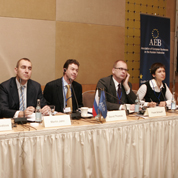
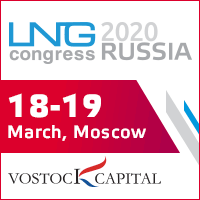


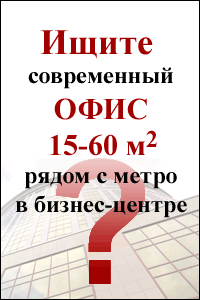




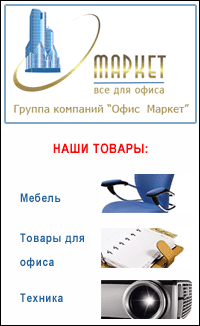
 Web design,
Web design,